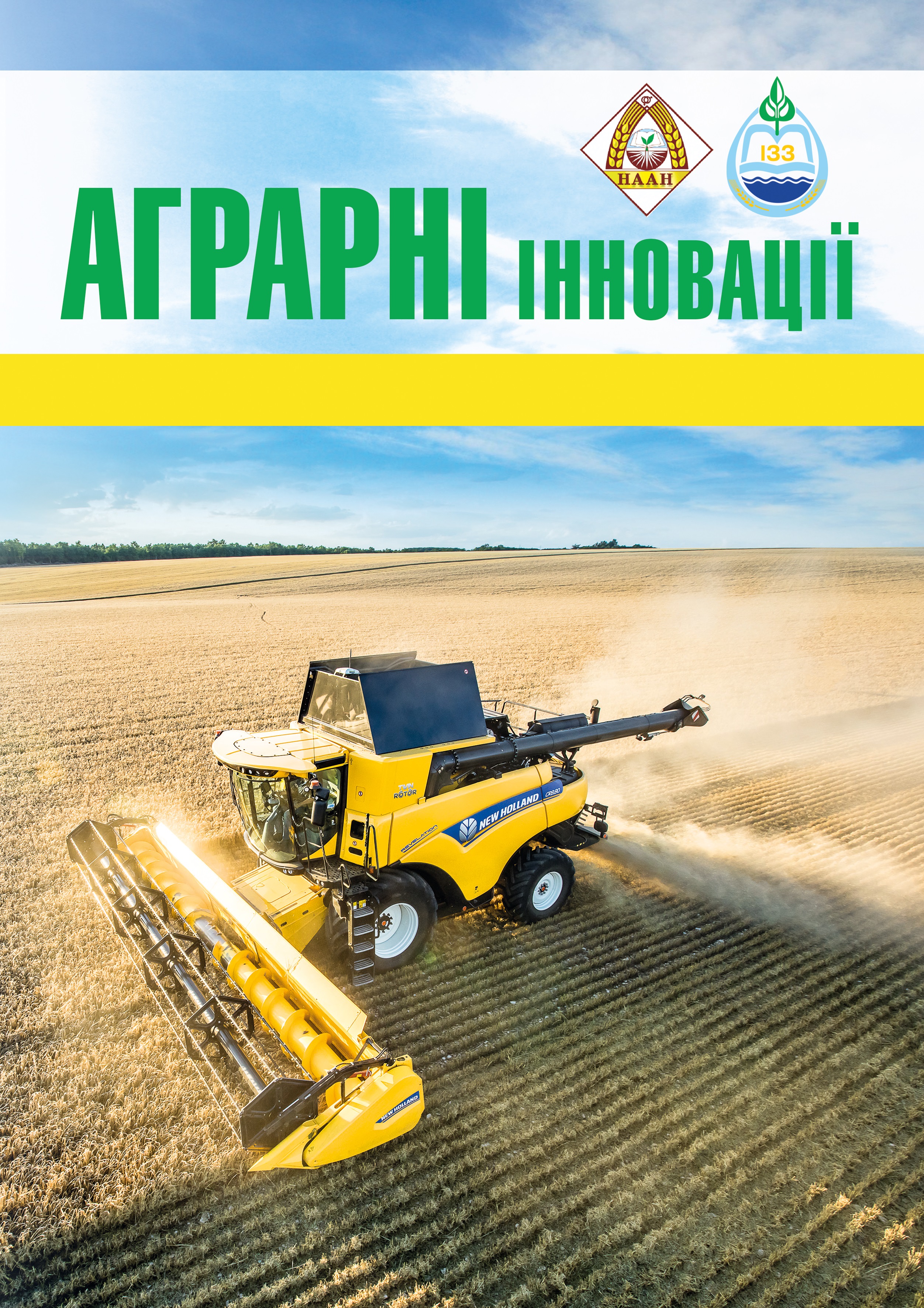Bioenergy efficiency of the technology of growing summer savory (Satureja hortensis L.) in the conditions of the Southern Steppe of Ukraine
Abstract
Based on the research carried out and the worked out elements of the cultivation technology, the article provides a calculation to determine the most optimal energy-saving elements of the cultivation of summer savory (Satureja hortensis L.), which will provide the highest yield of green mass in the conditions of the Southern Steppe of Ukraine. Research methodology. A three-factor study was carried out with the cultivar Oster of summer savory during 2012–2014 at the Research Field of the October Variety Research Station of the Mykolaiv branch of the State Enterprise “Center for Certification and Expertise of Seeds and Planting Material”. The research scheme included the study of the timing, sowing methods and conditions of moistening of medicinal, spicy-aromatic crops and the potential of its introduction into the zone of the Southern Steppe of Ukraine. Research results. The use of drip irrigation in the cultivation technology of summer savory was more energy- intensive in relation to the cultivation conditions, subject to natural moisture. Taking this into account, the indicator of total energy costs with additional water use amounted to 18.5–20.6 thousand MJ / ha. Under natural moisture conditions, energy consumption was 15.1–16.6 thousand MJ / ha. Energy input varied in the range of 11.0–38.3 thousand MJ / ha. Under conditions of drip irrigation, it ranged from 18.8 to 38.3 MJ / ha, and under conditions of natural moisture from 11.0 to 28.6 MJ / ha. Indicators of the energy coefficient of the cultivation technology of summer savory were in the range of 0.73-1.87. They were maximal under the condition of drip irrigation of the second sowing date and were in the range 1.64–1.87. Conclusion. The use of drip irrigation increases the energy costs for growing summer savory, they reach a maximum at the second sowing period, but as a result of an increase in the yield of green mass, the options have a more attractive value, both in terms of energy storage in the crop (37.7-38.3 thousand MJ / ha), and by an increase in the energy coefficient (1.84–1.87).
References
2. Жарінов В.І., Остапенко А.І. Вирощування лікарських, ефіроолійних та пряносмакових рослин. Київ : Вища школа, 1994. 234 с.
3. Земскова Ю., Лялина Е., Суминова Н. Элементы технологии выращивания чабера огородного и лофанта анисового в Нижнем Поволжье. Овощи России: научно-практический журнал. 2012. 1 (14). С. 41–43.
4. Коваленко О.А., Стебліченко О.І. Вплив строків, способів сівби та умов зволоження на врожайність чаберу садового (Satureja hortensis L.) в зоні Півдня України. Науково-практичний журнал: Збалансоване природокористування. 2017. № 4. С. 44–53.
5. Приведенюк Н.В. Біоенергетична ефективність вирощування валеріани лікарської за краплинного зрошення. Науково-практичний журнал : Збалансоване природокористування. 2017. № 3. С. 55–57.






